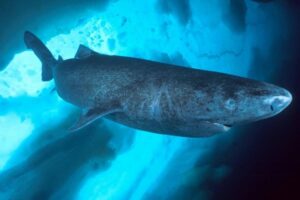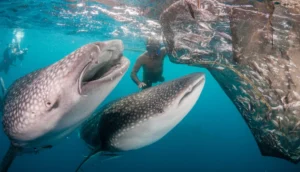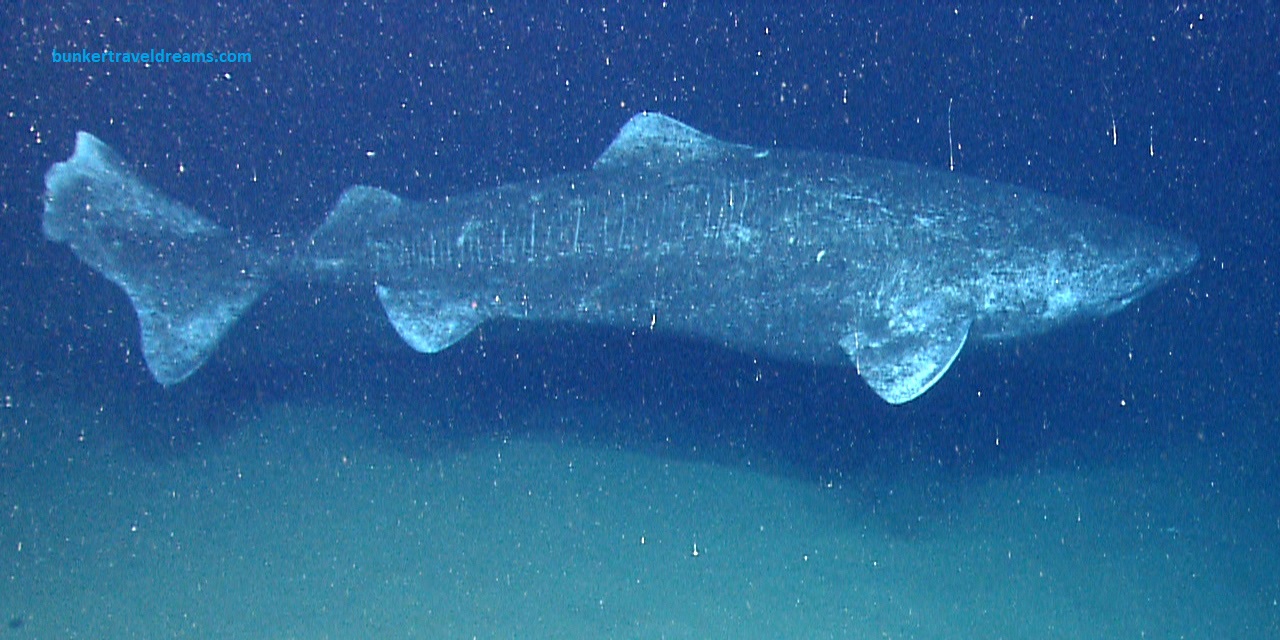Introduction
Ocean creatures with longest life have fascinated scientists for years. Some marine species, like the Greenland shark and the immortal jellyfish, can live for centuries. In this article, we explore the longest-living ocean animals and the secrets behind their extraordinary lifespans. These aquatic creatures, which range from deep-sea inhabitants to ancient turtles, have developed special adaptations to their surroundings that enable them to survive for hundreds or even millennia. In this investigation, we delve into the lives of the organisms who live the longest in the ocean, learning the secrets of their remarkable longevity and the functions they perform in preserving the health of our seas.
The world’s waters are home to marine life. Because of their adaptations, sea animals can survive in an environment that is salty. Bony fish, sharks, whales, dolphins, and sea turtles are among the well-known marine creatures. Sea creatures that are nektonic swim freely.
What is the first sea creature on Earth?
Sponges were (Ocean Creatures with Longest Life) among the earliest animals. While chemical compounds from sponges are preserved in rocks as old as 700 million years, molecular evidence points to sponges developing even earlier. Oxygen levels in the ocean were still low compared to today, but sponges are able to tolerate conditions of low oxygen.
The Longest-Living Ocean Creatures in the World

koi fish
Scientific name:(Cyprinus rubrofuscus)
Koi, or more specifically nishikigoi, are colored varieties (Ocean Creatures with Longest Life) of carp that are kept for decorative purposes in outdoor koi ponds or water gardens. Koi is an informal name for the colored variants of carp kept for ornamental purposes.
In Japan, the koi is a (Ocean Creatures with Longest Life) symbol of luck, prosperity, and good fortune, and also of perseverance in the face of adversity. Ornamental koi are symbolic of Japanese culture and are closely associated with the country’s national identity.
Lifespan:
25 – 35 years
Longfin Eel
Scientific name:(Anguilla dieffenbachii)
The New Zealand longfin eel (Ocean Creatures with Longest Life) is a species of freshwater eel that is endemic to New Zealand. It is the largest freshwater eel in New Zealand and the only endemic species – the other eels found in New Zealand are the native shortfin eel, also found in Australia, and the naturally introduced Australian longfin eel.
Longfin eels are carnivores (Ocean Creatures with Longest Life) and over about 40 cm in length they feed mostly on small fish and crustacea. They are responsible for major commercial and customary fisheries in New Zealand.
Lifespan:
18–23 years and up to around 60 years
Bowhead Whale
Scientific name:(Balaena mysticetus)
The bowhead whale, sometimes called the Greenland right whale, Arctic whale, and polar whale, is a species of baleen whale belonging to the family Balaenidae and is the only living representative of the genus Balaena
Bowhead whales are the longest-lived mammals known, with one male estimated to have been about 211 years old when it was killed by hunters. Now it has been found they have a gene duplication that appears to slow the division of cells, allowing the whales to live longer – but at the cost of reduced male fertility.
Lifespan:
Data has shown that bowhead whales (Ocean Creatures with Longest Life) may be among the longest-lived animals on earth. Based on the recovery of stone harpoon tips in their blubber, and from analysis of eye tissue, scientists believe that the life-span of bowhead whales can be over 200 years.
Red Sea Urchin
Scientific name:(Mesocentrotus franciscanus)
The red sea urchin is a sea urchin found in the northeastern Pacific Ocean from Alaska to Baja California. It lives in shallow waters from the low-tide line (Ocean Creatures with Longest Life) to greater than 280 m deep, and is typically found on rocky shores sheltered from extreme wave action in areas where kelp is available.
The red sea urchin is the largest of the sea urchins, with a maximum “test”, or outer skeleton, diameter of more than 18 cm and a maximum spine length of 8 cm.
Lifespan:
Southern California red sea urchins can live to be about 50 years old whereas those in British Columbia, Canada can reach more than 100 years. These same studies determined that (Ocean Creatures with Longest Life) Canadian urchins over 19 cm (7.5 in) in diameter were probably about 200 years old!
Greenland Shark
Scientific name:(Somniosus microcephalus)
The Greenland shark is a large, slow-moving shark that lives in the frigid waters of the Arctic. It’s the longest-lived vertebrate on Earth, with some estimates suggesting it can live up to 400 years. Greenland sharks can grow to be 24 feet long and weigh up to 2,200 pounds. They have a short, rounded snout, small eyes, and small dorsal fins. Their mottled gray color gives them a slug-like appearance. They are one of the slowest swimming animals, growing less than half an inch per year after reaching maturity.
Lifespan:
Scientists estimate the Greenland shark lives at least 250 years. They may live over 500 years. Close-up image of a greenland shark taken at the floe edge of the Admiralty Inlet, Nunavut.
Quahog Clam
Scientific name:(Mercenaria mercenaria)
The hard clam, also known as the round clam, hard-shell clam, or the quahog, is an edible marine bivalve mollusk that is native to the eastern shores of North America and Central America from Prince Edward Island to the Yucatán Peninsula.Quahog shells are oval-shaped and thick, with a dull gray exterior and white interior with a purple border. Quahog shells have growth rings that can be used to determine their age.
Quahogs are filter feeders that bury themselves in the ocean floor and pump water and food particles through their siphons.
Quahogs are protandrous hermaphrodites, meaning they start life as males but often change to females.
Quahogs can live for many years, with some ocean quahogs living for over 200 years.
Lifespan:
Ocean quahogs of about 100 years and older are common; a maximum shell length of 140 mm (5.5 inches) and a maximum longevity estimate of 225 years have been reported (Ropes 1985).
Orca
Scientific name:(Orcinus orca)
The orca (Orcinus orca) is a toothed whale, also known as the (Ocean Creatures with Longest Life) killer whale. It is the largest member of the dolphin family and is found in every ocean. Orcas have black backs, white chests, and white patches above and behind their eyes
They have paddle-shaped pectoral fins and tall triangular dorsal fins
Adult males (Ocean Creatures with Longest Life)can grow up to 32 feet (10 meters) long, while females can grow up to 28 feet (8.5 meters) long. Orcas have large brains and more than 40 interlocking curved teeth.
Orcas are apex predators with a diverse diet that includes fish, sharks, rays, seals, whales, and other dolphins
Individual populations often specialize in particular types of prey.
Lifespan:
50 – 90 years (In the wild)
Deep-Sea Sponge
Scientific name:( phylum Porifera)
Deep-sea sponges are (Ocean Creatures with Longest Life) invertebrates that live in cold, dark, and low-oxygen environments at depths of up to 1,300 meters. They are a vital part of the marine ecosystem, providing habitats for other animals and helping to maintain biodiversity.
Deep-sea sponges can be found on hard and soft substrates, such as boulders, cobbles, and sediment.
In many deep-sea areas, sponges may (Ocean Creatures with Longest Life)be the dominant organism, forming structurally complex and often highly diverse ecosystems known as sponge grounds, gardens, aggregations, and reefs. These are found globally on continental shelves, slopes, seamounts, and mid-ocean ridges, and in submarine canyons and fjords.
Lifespan:
Deep-sea sponges can live for (Ocean Creatures with Longest Life) hundreds or even thousands of years. However, estimates of their lifespan vary widely.
The species of sponge can affect its lifespan. For example, some sponges in temperate regions live for a few years, while some tropical species may live for 200 years or more.
Immortal Jellyfish
Scientific name:(Turritopsis dohrnii)
Turritopsis dohrnii (Ocean Creatures with Longest Life), also known as the immortal jellyfish, is a species of small, biologically immortal jellyfish found worldwide in temperate to tropical waters.
Turritopsis dohrnii, the so-called “immortal jellyfish,” can hit the reset button and revert to an earlier developmental stage if it is injured or otherwise threatened. Like all jellyfish, Turritopsis dohrnii begins life as a larva, called a planula, which develops from a fertilized egg.
The Australian box jellyfish is considered (Ocean Creatures with Longest Life) the most venomous marine animal. They may not look dangerous, but the sting from a box jellyfish could be enough to send you to Davy Jones’s locker-a watery grave, that is.The Australian box jellyfish, also known as the sea wasp, tops the list as the most dangerous jellyfish in the world.
Lifespan:
Of course, Turritopsis (Ocean Creatures with Longest Life) dohrnii isn’t truly ‘immortal’. They can still be consumed by predators or killed by other means. However, their ability to switch back and forth between life stages in response to stress means that, in theory, they could live forever.

The longevity of these species is important for:
- Fisheries management: Understanding their life histories helps set sustainable catch limits
- Marine biotechnology: Their unique biological mechanisms could have applications in medicine and industry
- Ecotourism: Iconic long-lived species attract tourists, contributing to local economies
Conclusion
Some of the most amazing organisms that defy the conventional notions of lifetime (Ocean Creatures with Longest Life) can be found in the water. These amazing creatures demonstrate the exceptional adaptability and survival techniques that have allowed them to flourish for generations, ranging from the 400-year lifespan of the ancient Greenland shark to the 500-year lifespan of the hardy ocean quahog clam. Their lengthy lifespans provide us with an insight into the intricacies of marine ecosystems, where these species are preserved due to slow development, genetic adaptations, and stable habitats.
But because of their lifespan, they are also susceptible to human dangers like habitat degradation and overfishing, which highlights the importance of successful conservation initiatives. We can guarantee that these enduring species’ amazing life tales will be told beneath the waves for many centuries to come by comprehending and preserving them.
FAQs
What sea creature can live the longest?
Scientists agree that the bowhead whale has the longest lifespan of all marine mammals. Whales are the largest animals on Earth and live longer than all other mammals in the contemporary animal kingdom.
What is the oldest life in the ocean?
And the award for the oldest sea creature goes to: the immortal jellyfish! We know, we know—the name gives it away, but it’s a name that’s well-deserved. Rather than die of old age, these jellyfish essentially rewind their life cycle.



